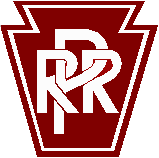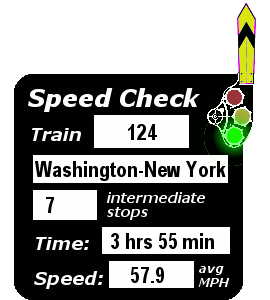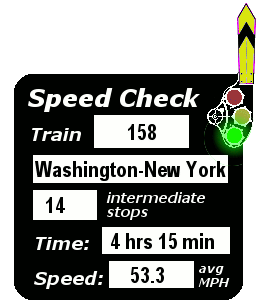NOTE:
No checked baggage is handled on these trains.
NOTE for No. 158 at Princeton Junction:
"Stops, except Saturdays, Sundays, and July 4 and September 3 [1956]."
Train 125:
The Midday Keystone.
Parlor and Dining Cars. Tubular Designed Coaches. Special coach lunch
service at seats.
Train 103:
The Midnight Keystone.
Sleeping Cars—New York to
Washington—Double Bedrooms and Roomettes—Daily.
Drawing-room,
Compartments and Sections—Except Saturdays and July 3 and September 2.
Single
Bedrooms—Except Fridays, Saturdays and July 3 and September 2.
New York to Baltimore—Double Bedrooms and
Sections—Except Saturdays and July 3 and September 2.
Tubular Designed Coaches.
(Sleeping Cars open New York at 9:30
p.m., except Sundays and holidays; 10:00
p.m. Sundays and Holidays. May be occupied in Baltimore and Washington
until 7:00 a.m.).
Train 124:
The Morning Keystone.
Parlor and Dining Cars. Tubular Designed Coaches. Special Coach Lunch
Service at Seats.
Train 158:
The Evening Keystone.
Parlor Car. Tubular Designed Coaches. Special Coach Lunch Service at
Seats. No Dining Car.











The Pennsylvania was proud of its in-house design capabilities. Over the years they had produced a notable string of triumphs, including the redoubtable K-4 and GG-1 locomotives. (The congenitally flawed T-1 duplex is best swept under the rug here.) So when in the mid-1950s they turned their attention to winning passengers back from the airlines and highways they had every expectation of yet another success. The P. R.R. designed, Budd-built "Tubular Train" featured a split-level design with passengers descending steps from the car ends to the seating area in the middle of the coach—which had been lowered nearly two feet to bring the passengers closer to the rails in hopes of a better ride.
View the advertisement for the new Keystones (PDF, 599K)